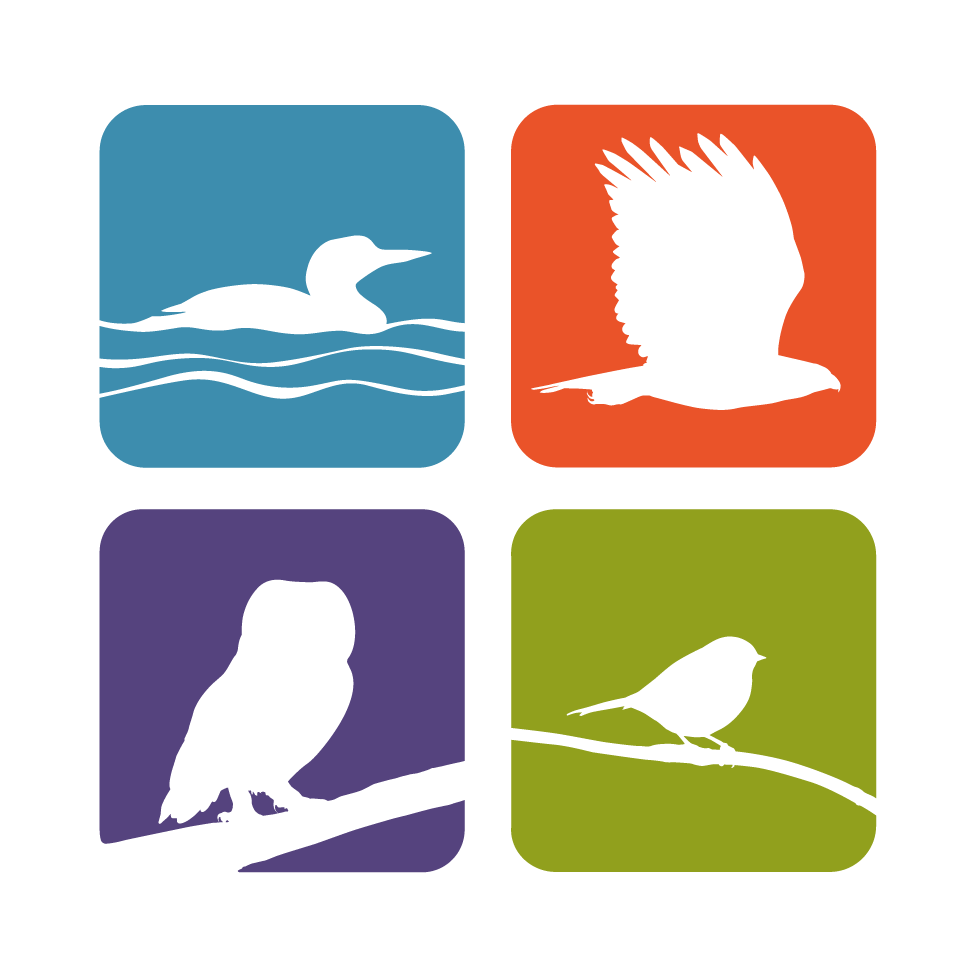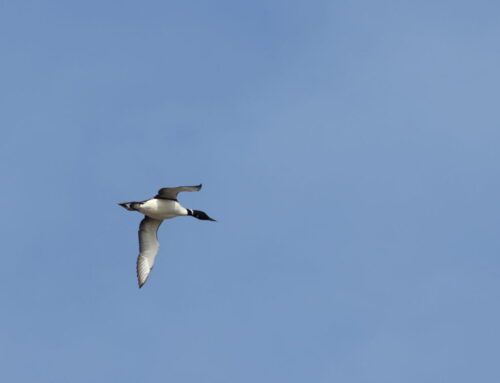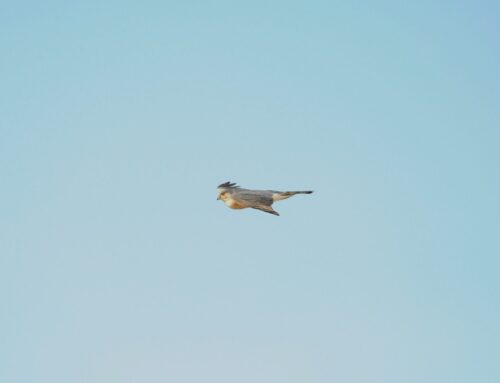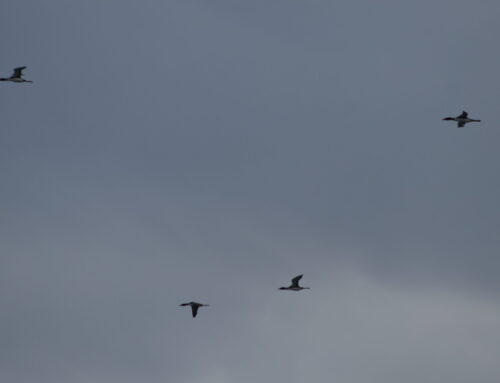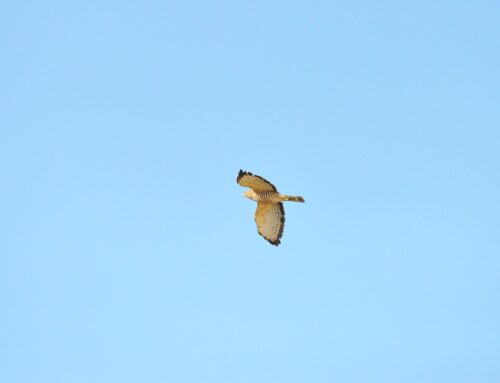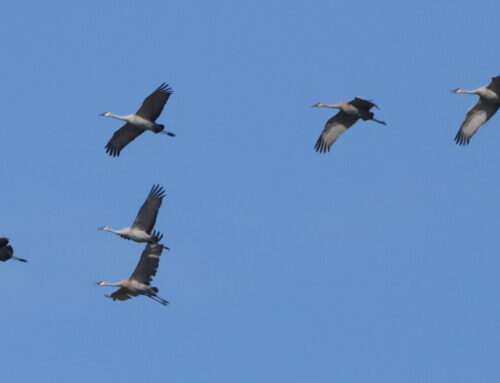At the staff house this week, there’s been an ongoing, friendly debate. Rich, WPBO’s hawk counter, believes that I, the waterbird counter, have the worse end of the weather deal. I don’t think that I do. While I am stationed on the windswept beach, it’s really not that bad. The waterbird shack — save for that one time last fall, when it actually blew over — makes a fine windbreak. The hawk deck, on the other hand, offers much less shelter — at least in my opinion.
Perhaps, these opposing viewpoints evolved as a survival strategy of sorts, formed on the basis of finding comfort by imagining that things could be worse. Already this spring, I’ve huddled on the leeward side of the shack thinking, “Well, hawks won’t be migrating in this weather, but maybe waterbirds will.” This thought is often followed by the thought that Whitefish Point would be a great study site for anyone wishing to develop new weather vocabulary.
But I’m not complaining. There is, in fact, a distinct satisfaction fostered by weathering those particularly brutal days, and I relish it. Late April at the Point is a season fraught with struggle: winter and spring appear at perpetual loggerheads, and winter seems bent on getting the last word — as many times as it can get away with. This week, it’s felt as if the seasons are a door swinging in the wind. When it blows from the south, loons, dabblers, and Red-necked Grebes cross the threshold, breeding-ground bound.
But when it switches around to the north, the door shuts; migration stalls. Dark clouds race in the opposite direction the birds want to travel, and sometimes, lake effect snow obscures the shoreline for much of the count. These are good days to pass the time by singling out the best waves and following their lunges towards shore. This past Tuesday, was one of these: a gale warning; 40-knot gusts from the north; 12-foot seas roiled. It was a memorable day — largely birdless, but elemental and wild. The wind rattled the shack, blowing snow snaked down the beach, and a pair of ravens barrel-rolled, croaking, overhead. I wondered what they thought of me, doing jumping jacks down below to keep warm…
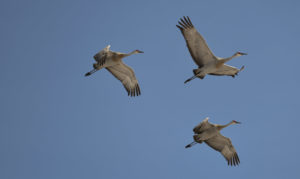
Sandhill Cranes passing over WPBO.
Today, Friday, the wind died, and the door opened back up. By midafternoon, the sky was full of cranes and their voices; the lines, ranging in size from four birds to 135 birds flowed, like a river, from one horizon’s limits to the other. Many flocks passed directly over the shack. As they prepared to cross the threshold between land and water, their cries crescendoed. The cranes’ migration, like the lake they were traversing, rang elemental and wild.
At the waterbird count, migration and weather alike are still warming up. Overall, it was a big week for crane movement: 1,000 were counted last Saturday, April 18, and 822 on April 24. Dabbling and Aythya ducks are passing by more frequently, and Common Loons build in number; 56 were tallied on April 19.
As always, thank you for reading.
— Alison Vilag, Spring 2020 Waterbird Counter.
Feature photo: One of Lake Superior’s common spring moods. Vilag.
If you are considering visiting the Point, please read this important message from Michigan Audubon and WPBO Field Staff.
Maneuvering the ever-changing implications of COVID-19 has necessitated constant adaptation and evaluation for us all. Michigan Audubon and WPBO have been proactive in taking measures that protect our staff, our physical community in Paradise, and the Michigan birding community, and we have found American Birding Association’s recent guidelines on birding and social distancing a useful resource for guiding bird-related travel decisions. While there are hopeful signs that we are rounding the corner with this virus, Michigan Audubon does not want to sow precocious optimism that encourages long-distance travel. Please take a minute to read these ABA guidelines, and to imagine them through the lens of the eastern Upper Peninsula, which does not have the medical resources of Michigan’s more-developed areas. Chippewa County and its adjacent counties have just three hospitals, and only one of these has more than 100 beds; they all are at least an hour’s drive from the Point. WPBO appreciates and requests your continued conscientiousness as the season’s migration begins to ramp up, and does not condone birding travel that is not local. Keep in mind that the Owl’s Roost Gift Shop and public observation of owl banding are currently closed. In the meantime, we will virtually share the Point with you as best we can until it is safe for all parties to enjoy it together. We hope that will be soon.

